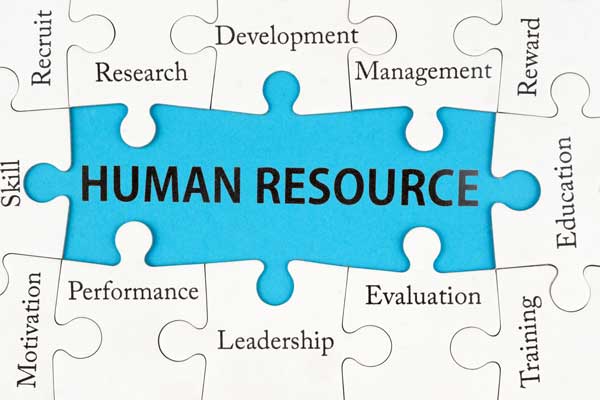- Motivation and leadership
Good human relation and work environment, people’s want and need, Maslo’s hierarchy, theory X and Y, Personality development, Chris Argys, Herzberg, McClelland, Vroom theory, leader and manger, traits of leadership, contingency theory of leadership, autocratic and democratic leader, charismatic leader, leadership grid, expectancy theory of leadership, lifecycle theory of leadership
Good human relation and work environment,
For smooth functioning of the organization, there is a need of climate that every employee feels secured, finds the working place as his place of development and a place for fulfilling his desires. So this chapter discusses about what an employee needs (motivation) and how managers support (leadership).
People’s want and need
Maslow’s hierarchy,
The American psychologist Abraham Maslow devised a five-level hierarchy of motives that, according to his theory, determine human behavior. Maslow ranks human needs as follows: (1) physiological; (2) security and safety; (3) love and feelings of belonging; (4) competence, prestige, and esteem; (5) self actualization.
Theory X and Theory Y
Douglas McGregor (1906 – 1964) is one of the forefathers of management theory has written a book The Human Side of Enterprise (1960), where he coined the term Theory X and Theory Y.
He has based his work on Maslow’s Hierarchy of Needs, in that he grouped the hierarchy into lower-order needs (Theory X) and higher-order needs (Theory Y). He suggested that management could use either set of needs to motivate employees, but better results would be gained by the use of Theory Y, rather than Theory X. These two opposing perceptions theorized how people view human behavior at work and organizational life:
Theory X
With Theory X assumptions, management’s role is to coerce and control employees.
- People have an inherent dislike for work and will avoid it whenever possible.
- People must be coerced, controlled, directed, or threatened with punishment in order to get them to achieve the organizational objectives.
- People prefer to be directed, do not want responsibility, and have little or no ambition.
- People seek security above all else.
Theory Y
With Theory Y assumptions, management’s role is to develop the potential in employees and help them to release that potential towards common goals.
- Work is as natural as play and rest.
- People will exercise self-direction if they are committed to the objectives (they are NOT lazy).
- Commitment to objectives is a function of the rewards associated with their achievement.
- People learn to accept and seek responsibility.
- Creativity, ingenuity, and imagination are widely distributed among the population. People are capable of using these abilities to solve an organizational problem.
- People have potential.
Personality development
There are two types of personality of people; success seekers and failure avoiders. Success seekers are motivated to do the works to get success whereas failure avoiders decrease workers because they fear that they will be failed. success seekers seem to be most strongly motivated by tasks that have a medium level of difficulty; whereas failure avoiders seem to prefer either very easy or very difficult tasks. Finally, success seekers are more likely to set realistic goals, whereas failure avoiders tend to set goals for themselves that are unrealistically easy or difficult.
Chris Argys
Chris Argyris developed the Theory of Immaturity-Maturity. Individuals progress at different rates from the total immaturity of early childhood (being passive, dependent, shallow, limited activity) to maturity (active, independent, deeper thoughts, interests that are more varied). Most organizations have bureaucratic or pyramidal values that foster immaturity in workers.
Argyris’s Immaturity-Maturity Theory is the most intriguing of these motivational theories. Unfortunately, most organizations still adopt the bureaucratic or pyramidal style of leadership. This authoritarian style often resembles a family with a dominating parent (management) exercising almost total control over the children (employees)
Herzberg’s Motivation-Hygiene Theory
Fred Herzberg focuses on outcomes that can lead to high motivation, job satisfaction, & those that can prevent dissatisfaction. Herzberg states two needs: motivational and hygiene. Motivator needs related to nature of the work and how challenging it is. Outcomes are autonomy, responsibility, and interesting work. Hygiene needs relate to the physical & psychological context of the work. These needs Refer to a good work environment, pay, and job security. When hygiene needs not met, workers are dissatisfied. Note: when met, they will NOT lead to higher motivation, just will prevent low motivation.
McClelland, Achievement Motivation Theory
David McClelland was a psychological theorist. He gave his view that every individual has three motivators. They are: 1) Achievement, 2) Power and 3) Affiliation
Achievement:
They usually set challenging goals for themselves, assume personal responsibility for accomplishment and take calculated risks for achieving these goals. They are very effective in leading task oriented groups and do well in entrepreneurial roles. Simply put, they love to achieve, and to measure that achievement.
Power:
Power oriented people want to control and influence, they have a need to win arguments, and love to persuade and prevail. This motive is activated when the individual is allowed to have an impact, impress those in power or beat competitors.
Affiliation:
Affiliation oriented people have a strong desire to belong. They have a deep concern for relationships, they strive to reduce uncertainty, and they love teamwork. These leaders are motivated by what they can accomplish with people they know and trust.
Victor H. Vroom theory
Victor H. Vroom, developed the expectancy theory in 1964. This theory examines the relation of expectancy with performance, performance with reward, and reward with valence (value).
Three components of Expectancy theory are:
- Expectancy: E -> P. The belief of the person that her/his effort (E) will result in attainment of desired performance (P) goals.
- Instrumentality: P -> R. The belief of the person that she/he will receive a reward (R) if the performance (P) expectation is met.
- Valence: The value of the reward according to the person. (e.g. Is the reward attractive to the person?)
Leader and manger
Warren Bennis has said, there is a difference between management and leadership and both are important. The differences are listed here.
|
|
|
|
|
|
|
|
|
|
|
|
|
|
|
|
|
|
|
|
|
Traits of leadership
Great leaders have many things in common, they are:
- Inspire action.
- Be optimistic.
- Have integrity.
- Support and facilitate your team.
- Have confidence.
- Communicate.
- Be decisive.
Contingency theory of leadership,
Contingencies theories believe that the success of leadership depends upon many contingencies variable. Two theories are popular. One is the theory of Fred fielder and another is of Harsey and Blanchard.
Fielder’s model
Hersey and Blanchard’ theory of leadership
This is situational theory also sometimes called Lifecycle theory of leadership. It assumes that leadership styles of a is changed. In the early phase it is telling, then leaders decrease involvement and go to selling, participating and delegating. At the delegating stage the employee become fully empowered.
Autocratic and democratic leader,
Various ways the autocratic and democratic leadership styles have been described. The Table summarizes this.
| Theory | Autocratic | Democratic |
| Terms | Task oriented | Relation oriented |
| Directive | Participative | |
| Ohio state studies(Fleishman, 1953) | Initiating structure | consideration |
| Human side of enterprise(McGregor’ 1960) | Theoy X | Theory Y |
| Michigan studies(likert 1960, likert, 1967) | Task oriented | Employee oriented |
| Blake’s leadership grid(Blake and mouton. 1964) | Concern for production | Concern for people |
| Path goal theory (Vroom, 1964) | Directive or task oriented | Supportive or relationship oriented |
| Fielder’s least preferred co-workers(Fiedler, LPC 1964) | Task oriented | Relationship oriented |
| Greenleaf(1973) | Servant leadership | |
| Burns,1978
Bass, 1999 |
Transactional | Transformational |
Charismatic leader
Some leaders have extraordinary ability to influence others. So ASK.com has described this leadership this way ‘Charismatic leadership is leadership based on the leader’s capability to converse and behave in ways that reach followers on a basic, moving way, to motivate and inspire. A charismatic leader should have the gift to speak on a very commanding emotional level, and maybe include some personality traits. Some of the famous charismatic leaders include J F. Kennedy, Nelson Mandela and Winston Churchill.
Leadership grid
Expectancy theory explains why people work hard to attain work goals. People will engage in behaviors that lead to goal attainment if they believe that (a) goal attainment leads to something they value (e.g., increase in pay, status, promotion) and (b) the behaviors they engage in have a high chance (expectancy) of leading to the goal. If people do not value the reward for goal attainment or believe that their behavior is unlikely to lead to goal attainment, then they will not be motivated to work hard.
The Managerial Grid is based on two behavioural dimensions:
- Concern for People – This is the degree to which a leader considers the needs of team members, their interests, and areas of personal development when deciding how best to accomplish a task.
- Concern for Production – This is the degree to which a leader emphasizes concrete objectives, organizational efficiency and high productivity when deciding how best to accomplish a task.
Using the axis to plot leadership ‘concerns for production’ versus ‘concerns for people’, Blake and Mouton defined the following five leadership styles:
- Impoverished Leadership – Low Production/Low People
- Country Club Leadership – High People/Low Production
- Produce or Perish Leadership – High Production/Low People
- Middle-of-the-Road Leadership – Medium Production/Medium People
- Team Leadership – High Production/High People
Expectancy theory of leadership
Expectancy theory explains why people work hard to attain work goals. People will engage in behaviors that lead to goal attainment if they believe that (a) goal attainment leads to something they value (e.g., increase in pay, status, promotion) and (b) the behaviors they engage in have a high chance (expectancy) of leading to the goal. If people do not value the reward for goal attainment or believe that their behavior is unlikely to lead to goal attainment, then they will not be motivated to work hard.




